
World Traveler III

World Traveler III

Off-Road Ranger I
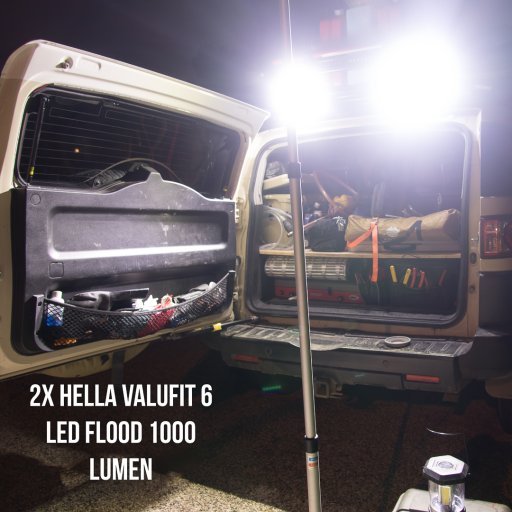


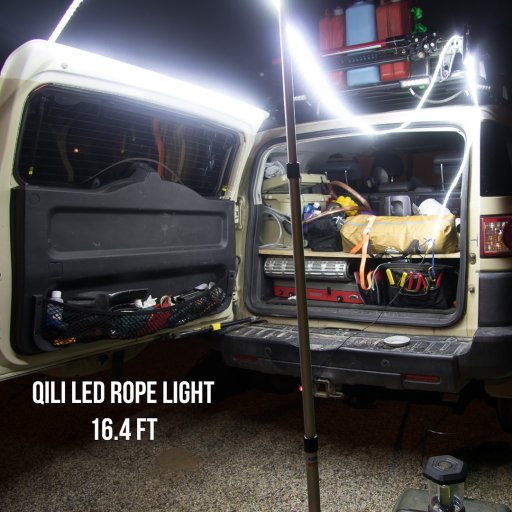
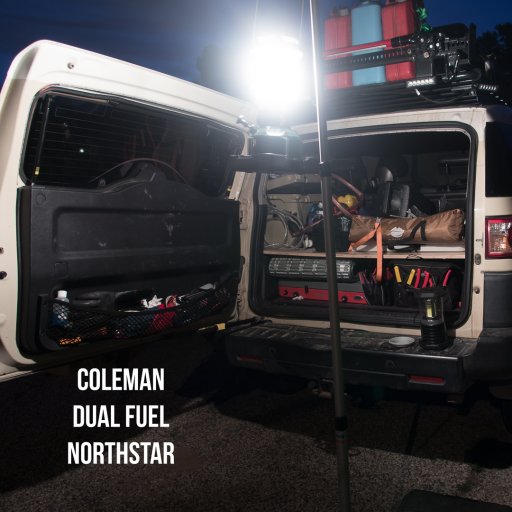
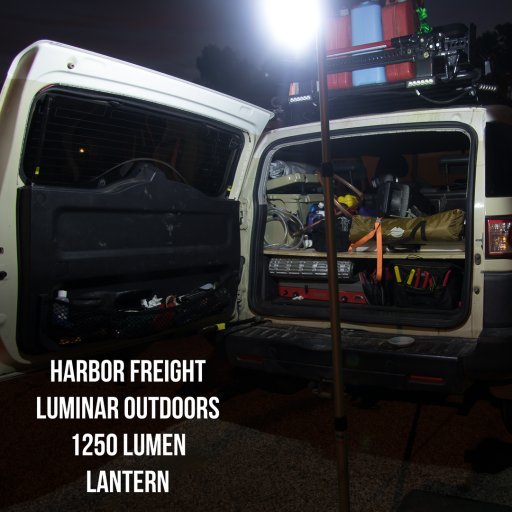
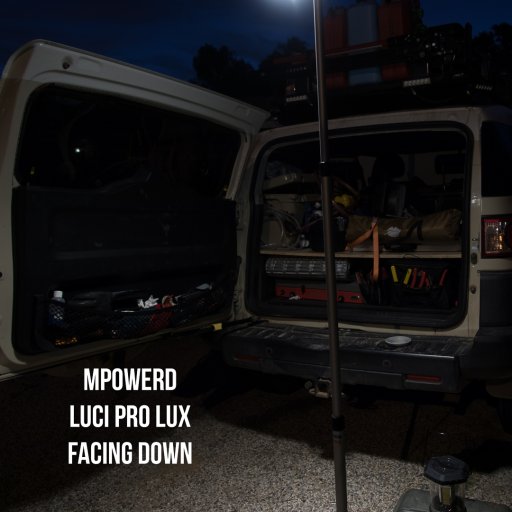
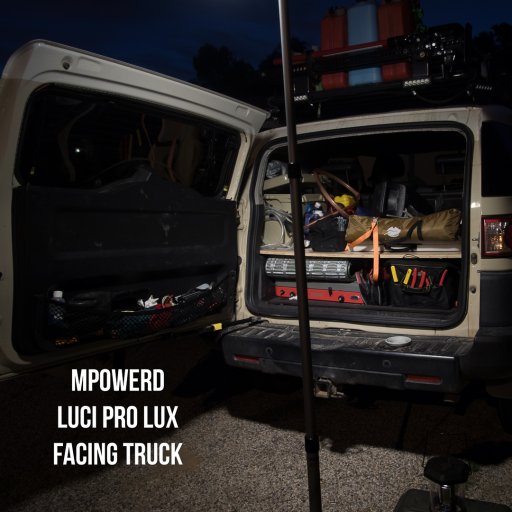
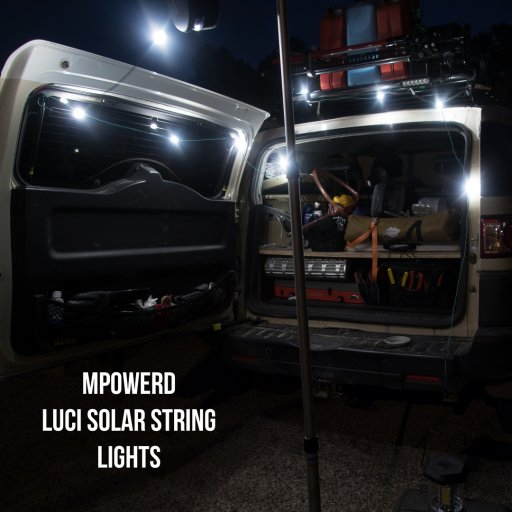
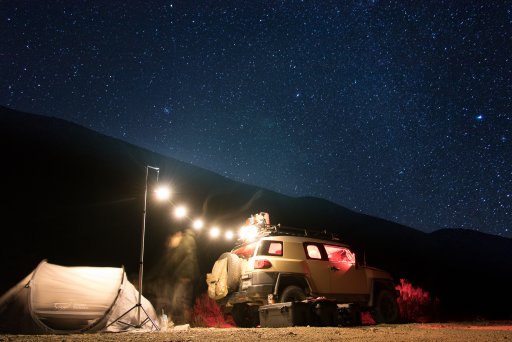
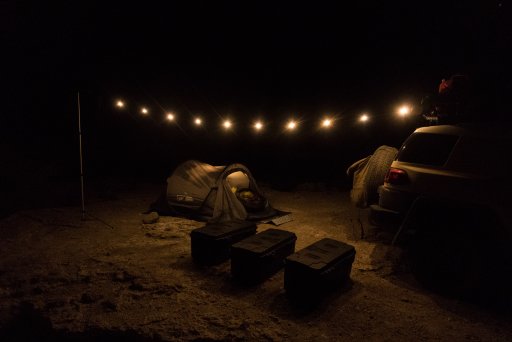
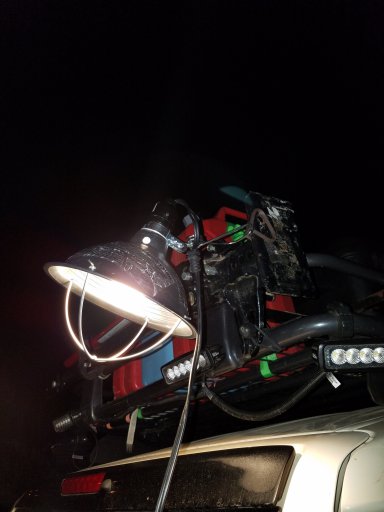
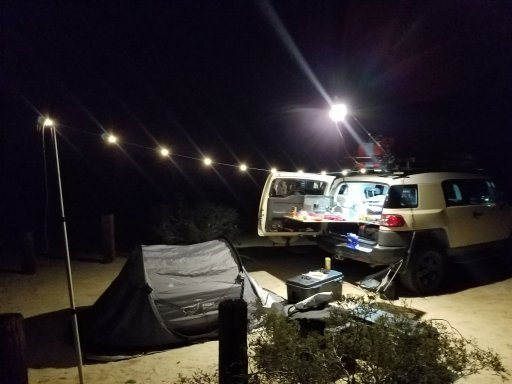

Experimenter II

Traveler III
7082
That is a nice idea. Do you have a pick of the lights in your camp setup?Over the summer, we tried out using these cheap LED strings that run off a battery pack of 2-3 AA batteries. They're cheap and they put off a decent amount of light. Some are just one color while others are multi colored. They even have different modes. We have a mix of single and multi color ones. They're great around the camp table, awning, and in the tent since they're not obnoxiously bright.

Traveler III
7082
No pics of the setup unfortunately. I will say that a perk to these lights is that they don't seem to attract the bugs nearly as bad.That is a nice idea. Do you have a pick of the lights in your camp setup?

Influencer III
I love this idea. Gonna order some.Maybe not your total camp lighting setup, but I thought I would throw out a product I found that is useful. It's a LED lantern called CampGuard. It has a few different lighting levels and a built in motion detector. One setting allows for the light to trigger from motion, coupled with an audible alarm.
Since we camp pretty far off the beaten path, we were looking for something that might give us a few seconds "early warning" if anything decided to join us in camp without an invite. Used it the first two times set to just the motion light after we went up in the RTT for the night. Since we are up on the roof, I realized that the light wasn't really bright enough to wake us, but thought it would scare off a critter. On the third night, decided to flip on the motion with alarm before we went to bed just to see if it would be a nuisance going off all night with false alarms or would it be useful. About 1 am, alarm triggered and then went off (lasts for about 10 seconds). Heard something run off, but thought it was a raccoon or something. Waited for a second and it triggered again. Heard nothing. Started to drift back off to sleep after about 2 minutes of quiet. Then we hear a bear grunt and snort and growl about 30 yards off the drivers side door. Figured out that a bear had tried to come into camp off the back of the Jeep.. got spooked from the light and alarm, tried again. Probably frustrated, circled around to the drivers door and let us know he was not happy with our security measures. We started the Jeep with remote start and he ran off. Got home and ordered another for the front of the Jeep for 360 coverage. Happy with the purchase and the few seconds of early warning.

Off-Road Ranger I

Member III
That old stuff is good stuff, don't let it get away. You won't find anything nearly as sturdy to replace it with. There's a thread for those Coleman lanterns on here, drop by and share some pics of yours! There's a pretty good following for them, I have 9 of the various models myself!2 good old colmen lanterns and some headlamps. The kids each have a led lantern too. Someday maybe we'll up date but the classics just keep working. We have a fair bit of camp and cooking gear that I got from my grandparents when they stopped camping. So some is over 50 years old.
Yea, I don't have any plans on getting rid or it. It has yet to let me down. A little cleaning here and there and ready to go. One of the lanterns is from when my mom was a kid and the other is only 20ish years old.That old stuff is good stuff, don't let it get away. You won't find anything nearly as sturdy to replace it with. There's a thread for those Coleman lanterns on here, drop by and share some pics of yours! There's a pretty good following for them, I have 9 of the various models myself!
Coleman Sickness..affliction...
Does anyone else suffer from this? I find myself always searching for old lanterns, stoves, ice chests etc... My mother in law found this one at a Garage Sale, still had the paper instructions and extra mantles in the base, built (and maybe last used) in 1968. After a little cleaning and a...www.overlandbound.com

Traveler III
Wow! I think you get the award for the most informative post in the history of the internet!Ok, Ya'll.
New member.
Light obsessed since birth. Photography/Videography did not help this obsession and the G.A.S.(Gear Acquisition Syndrome) of overlanding and the constant need to test gear has led me to signing up with OB mostly so I could post on this thread... I hope you enjoy my extremely nerdy, long winded, and poorly written findings below.
Quick disclaimer about some of the attached photos:
The exposure for all those with text is the same to show the difference in brightness between them.
The color temperature of the images was matched across all of them to better show the brightness and light quality without the color affecting the viewer and therefore the images are not representative of the actual color of light these devices actually produce.
Also note that I refer to:
Lumens as total light output of a device regardless of direction or beam pattern.
Lux as the total brightness on a surface at a specified distance.
and Light Pollution as a high amount of light being cast in unnecessary directions(think other campsites)
When it comes to camp light I broke it down into a few categories to decide what I needed and when.
Things that were important to me in terms of light itself:
- Wide Area(whole campsite) vs Local Area(single task or reaching distance area)
- Vehicle mounted vs Portable.
- 12v Vehicle Power, Rechargeable/Solar, disposable Battery, and Gas/Propane.
Things I dislike.
- Brightness.
- Color temperature.
- Light control to minimize Light Pollution.
- Larger or multiple light sources for minimizing shadows.
- Higher or multiple mounting options.
- Being blinded by extremely small and bright light sources.
- SHADOWS and GLARE from those small light sources often mounted at or near eye level.
- Spending money for name brands... really FSR/CVT/Luminoodle?
When I first roll into camp, I need to get things out of the vehicle, off the roof rack, and generally set up camp. Cast a large area around the vehicle and at a distance to set up portable toilet/privacy tent.Que the 6 Hella Valuefit 6 LED 18w flood lights on the roof rack. 2 on the rear. 2 left and right above the Front windows, and 2 45 degrees off the rear corners... The 2 rears on a single switch and the other 4 on another. Also, 10 LED rocklights under the vehicle. These vehicle mounted 12v lights require no setup or maintenance and because I am moving around the vehicle for multitasking they cast light over a large area and distance that I need without having to reposition them.
View attachment 85436View attachment 85450
Pros:
Cons:
- I can see everything without a hitch with little shadows all around the vehicle so I can set up quickly and efficiently without struggling to see.
- VERY useful if camping with others that do not have a built rig.. set my rig in the middle and light up the camp for multiple vehicles if we are all in agreement the light is useful and necessary.
- Used while driving, spotting, inspecting, working on, or filming the vehicle at night.
- Too much light for certain applications.
- Blinding if looking directly into them by mistake. Glare with and without glasses if too close.
- Lots of light pollution to other campsites.
- High amp draw. 1.5 amp/light(9 amps total) and 2.25 amps for all 10 rock lights.
- Very neutral white color temp is not very inviting for just hanging out.
- Not dimmable.
After camp is setup it is time for the kitchen.The vehicle mounted floods go off, and if its just me camping, the rear door LE(Lighting Ever) 2835 LED strips go on. I no longer require the large area light around the vehicle and just need to cook in a small area.
View attachment 85433
Pros:
Cons: Depending on your required brightness needs, being more than 10 feet away from the lights becomes rather dim. Color Temp is very cold which I prefer for tasks as it helps me stay awake/alert and color reproduction and contrast is great for cooking IMHO.
- VERY low amp draw. .8amps IIRC for my setup
- Minimal light pollution.
- Cool Color temp is great for tasks.
- Brightness divided across a larger surface area nearly eliminates shadows over work area and nearly eliminates glare as compared to the same brightness value coming from a smaller singular light source. EG: lantern or flood light.
- My absolute favorite thing is no shadows of your limbs or utensils on what you are cooking. You can see everything without shadow.
For lighting the area beyond the cooking area and depending on the task I may choose one or a combination of different lights:QiLi Rope Lights for Car LED
I chose this over the Luminoodle for cost and power options. Its $20 on amazon, uses a cigarette plug and is very bright and neutral white color temp. Can be modified with magnets(home depot neodymium and 1 inch clear adhesive lined heatshrink tubing at 1 foot intervals) and loops to attach to the vehicle, Canopy, Awning, Campground Gazebo, under the vehicle as a trouble light or my favorite; hung between the roof rack and a Coleman lantern stand. I added the mentioned modifications as well as lengthened the power cord to run it over picnic tables.
View attachment 85438
Pros:
Cons:
- AMAZING Area light.
- 1.4 amp draw.
- Great for if you have multiple people with you that need light just around camp.
- Minimal shadows, Minimal glare.
- Lightweight and compact.
- Light from above is a vast improvement over a lantern at table or head height.
- Very controlled light so minimal light pollution though extremely bright over the large are that you need it because all the LEDs face the same direction it can be aimed down or away from other campers.
The alternative to the above options is usually wide spread and much loved lantern such as a Coleman white gas/dual fuel or propane lantern.
- Tethered to vehicle unless you have a portable power source such as Goal Zero Yeti or other.
- Non-Dimmable brightness and neutral color temp may not be preferred for eating, games, reading, hanging out.
View attachment 85431
Pros:
Cons:
- Bright
- reliable
- possible multi fuel options
- rebuildable
- long run time compared to disposable battery/solar options
- Dimmable.
All that said I still love my Coleman Dual Fuel Lanterns. The heat. The warm light. The Glow. The slight flicker. The hiss. The maintenance and tinkering and classic ritualistic setup. The history. The pure faded green Murica Nostalgia. They just won't be going on many trips unless I am camping with a large group away from the vehicle.
- Heat and cooling down time/setup time
- Can be finicky
- Fragile parts/ parts that routinely wear out
- Highway robbery for fuel in remote locations if it is available at all.
- Large and heavy.
- VERY small light source(the mantle itself) casts lots of harsh outlined shadows.
- High amounts of glare.
- Lots of light pollution as the light source is always exposed from 360 degrees.
- Minimal mounting options.
- Dual fuel requires frequent pumping during use.
- Propane performance is low at or below freezing temperatures.
- Canisters.
- And my number one annoyance which no one talks about; The GIANT shadow directly beneath the tank of the lantern while hung.
To reduce or eliminate some of the cons of this light I went to a D-cell powered option by LuminarOutdoors at Harbor Freight..1250 advertised lumens and I believe it. Side by side comparison with a photographic light meter produced almost identical readings to my Coleman Dual Fuel 282 and Northstar lanterns. The major con for me personally is the color temperature is very ugly. The pro is it is extremely quick and easy to deploy and a simple foil baking pan turned reflector is great at minimizing light pollution. Sometimes I throw this on a picnic table when first arriving to set up camp to reduce the shadows coming from my rear rack lights. Or just to add to the small army of portable LED lanterns my large backpacking group deploys when we meet for a car camp trip.
Next for lanterns is one you've all been talking about. The LUCI LIGHT!
I went with the Luci Pro Lux with mobile charging and here is why!
The Lux model has 2 main features I prefer over the PRO/2.0. A frosted/diffused globe and a warmer color temp.
The "Pro" with "Mobile Charging" model just gave me the highest Lumens for those preferred features.
I already have tons of neutral and cool temp lights. I want something warm and dim for eating/games/hanging out, and inside tent.
And I did not want the strange crinkled light patterns from the clear globe models.. it looks like a messy spiderweb of light falls on everything vs a soft even beam with the Lux model. But that is just my opinion.
View attachment 85434View attachment 85435
Pros:
Cons: It really only casts light straight out from the LEDs.. I would say 80% of the light emitted from this thing is straight out in a rather focused soft edged round flood beam and a negligible amount of light out the sides. Great for tents or directly over a table for eating/games or a light task area. I would prefer a much brighter light for cooking. See my referenced photos about the beam/spread of this light...on a single spot of light a few feet away. I would say its brightness on that area... or its LUX. Is almost on par with a coleman lantern. Yeah. It's alllllmost THAT bright. Check out the photos for yourself!
- Portable
- Solar/rechargeable
- Dimmable
- warm color temp.
- Pretty much zero light pollution.
Another one that is a combo of the Luci Light and Luminoodle AND the QiLi LED strip is the Luci Solar String Light. I LOVE this thing. It is very dim. Basically bright enough to keep you from tripping over things. But it is an absolutely wonderful warm ambiance/mood light for under a cover/structure, inside a tent, or over a table for eating, games, etc.
View attachment 85437View attachment 85430View attachment 85451
Pros:
Cons:
- Warm color temp
- Dimmable
- Solar/Rechargable
- Extremely portable and lightweight as the Luci Light
- Low brightness.
- After my camp mates have finished all tasks. the QiLi goes off and the Luci Solar String Lights go on to SET.THE.MOOD!
Last and certainly not least is a light of my own creation in a way.A simple combination of Home Depot parts to mimic the beloved glow and brightness of the Coleman lantern without any of the draw backs and a little more versatility without the cost of a GoFSR Readylight.
The Feit Electric 60W Equivalent Warm White 3000K A19 LED 12-Volt RV/Marine Light bulb
Installed in an HDX 8-1/2 in. 125-Watt Incandescent Aluminum Heat Clamp Light. Modified the cord by lengthening and adding a cigarette plug with 1 amp fuse. Currently either mounted to the Coleman Lantern Stand or an 8 foot extension pole off the roof rack as seen in the attached photos.
This light was designed around the idea of an Austrailian product I desperately want to test if it is ever available in the US called the OZtrail Comet.
A 25w LED light with a large aluminum reflector in a 4.5 meter or 13ish foot fiberglass extension pole.
View attachment 85440View attachment 85439
This provides multiples of the preferred properties of light I mentioned previously.
Cons:
- Warm color temperature
- High Output of 800 lumens( Higher LUX with the reflector on vs coleman lantern.)
- Low Current Draw of .75amps at 12 volts.
- Multiple mounting options.
- No batteries, fuel, recharging, or heat.
- Very lightweight and compact.
- Quick and easy to use. Simple design and highly replaceable and durable parts.
- Larger light source with reflector for softer shadows in addition to light from above for non directional shadows when working underneath.
- No more tank shadow.
- Directional with reflector if needed or 360 degree lantern like spread without.
- Wide local area spread with minimal light pollution as nearby campers are shielded from the direct beam of the bulb by the aluminum reflector.
- Useful as vehicle trouble/drop/work light
- Extremely low cost of around 25 bucks in parts.(bulb, reflector, extra cord, 12v cig plug, butt connectors/heatshrink)
Check out the photo of it in use and see what you think.
- Probably not very waterproof - will require further modification.
- Vehicle Tethered. Non Dimmable.
If I could only have one it would be this home brew light. And I have plans to upgrade the pole to a fiberglass Heavy duty telescoping flag pole.
Thank you for coming to my TEDtalk.
Adam-G

Traveler III
I really like my Free Spirit Ready light as well. Like you said, they're not cheap, but no need to plug it in,, no batteries, and it's actually 5 lights in one. I really like the smaller pod lights and the magnetic backing to them. They come in so handy. I have personally recommended the FSR light to many people, and numerous have purchased it, and they all have no regrets. Well worth the money.Depends on where I'm setting up camp.
If any neighbors within eyesight--I don't mean just organized campgrounds, but dispersed camping or back country when any other camper is in sight--I don't use headlights, backup lights or light bars. It's inconsiderate when someone sets up after dark and uses their headlights or back up lights to set up and doesn't think about their light potentially bothering others. A considerate camper even dims his headlights when pulling in and out of camp whenever it's dark, set up or not.
I use headlamps and task lights a lot. Headlamps are a god send, and once I got used to using one regularly and not using my Streamlight pocket flashlight between my teeth, I wondered why I waited so long to use them. I prefer one that has an adjustable angle so I can tilt it forward or back, depending on need.
My favorite all around camp light, though, for both setting up and general lighting is the Free Spirit Recreation Ready Light (no affiliation) or @gofsr on insta. Seen in the pic below at left.
Bought two initially, then two more once I saw how handy they are and how much I use them around camp. More than once I've taken a Ready Light over to someone trying to set up camp in the dark with only headlights or cell-phone light, or to someone who is trying to do stuff around camp with insufficient light. I've even been brought full meals by grateful campers. Cracks me up how many people are so unprepared for lighting and try to use their cell phone flashlight to play cards, or read, etc.
Cool thing about the Ready Lights is that they are very efficiently solar-powered, though can also be charged via 110 or 12v and come with adapters for each. They come in a well-designed and rugged carrying pack for the tripod/legs with outside zippered pocket for adapters, and separate padded pouch for the head units (seen behind the small solar chargers in the 1st pic below).
Each light has a large main light and four removable pods, all of which have high and low settings. Each main light also has a USB port for charging USB devices. Each pod has a strong magnet and folding hook, which makes the pods extremely handy around camp, short walks to the latrine or wash up area, working on vehicles, etc.
I'm dead serious when saying these are pretty much all I use now around camp. Most other lanterns I have go unused. No fuel needed, no batteries to stock up on or have chargers for. I rarely even use the Rigid task lighting on my trailer anymore in camp, though do like the rock lights on the underside when it's buggy. Keeps the bugs low, not up around food or my face.
They are also super portable, so I bungee them to my awning arms shining up into the canopy, use them in the van stuck to the door frames over the fridge or over my bed, under the hitch or trailer tailgate shining down on my firewood. I use the main lights with the panel folded horizontally, light shining down, for all sorts of camp chores from setting up a tent, to starting a fire after dark, to cooking. I've taken the main head off and used them under my van, too, when needing a general wide light. Just be careful to protect the solar panel on the other side.
All the light in the image at bottom is from two Ready Lights, though set on high and set up more for lighting the photo. Most of the time the main light is almost too bright for general camp use. I typically use just the pods around camp after dinner, placed in strategic spots. Makes for a really nice, soft, ambient light, and easy to turn on/off as needed, like over the fridge.
I've also used the main lights on their tripods to set up a wide perimeter when needed, shining down, and hung the pods in trees and brush for a landscaped lighting effect around a perimeter when camping with a group. Helps keep track of kids and pets.
They're pricey, at around $250 ea, though have proven their worth many times over. I'm thinking of getting two more for workshops and group camping. The staff at FSR has always been super helpful. I wouldn't get these on Amazon, though, where they are priced a hundred dollars more.
You do need to anchor them in heavy winds. They come with stakes for holes in each foot. Only thing I'm not real keen on with these is that the upright is not adjustable. You can adjust the head unit's angle from flat to straight up and swivel it around 360, or take the head unit off the pole if need be, but the pole is not adjustable in height. I've found that every once in awhile I'd like the main light to be lower, like over a table or work surface. I'm used to using heavy-duty lighting stands in studios and know it's possible.
I rarely have to set up in the dark, though often tear down as it's getting dark, or have to suddenly tighten things up in the dark because a storm's coming, and my Ready Lights are the first things I grab.
Not sure you can get them in sand color anymore, though they are typically available in olive drab and black.
View attachment 47118
View attachment 47120
View attachment 47121

Expedition Master III
Yup, Coleman lanterns x2, the newer battery lanterns for tent use, LED and old school head lamps. Love the hiss the latter give off. Only downside is the fragile silk element socks, and their prep.2 good old colmen lanterns and some headlamps. The kids each have a led lantern too. Someday maybe we'll up date but the classics just keep working. We have a fair bit of camp and cooking gear that I got from my grandparents when they stopped camping. So some is over 50 years old.

Member III

Expedition Master III
This post needs to be a must read....and have it's own BOOT CAMP.......OP. a great writeup. In one post it covers so many aspects of camp lighting.Wow! I think you get the award for the most informative post in the history of the internet!
Seriously, great post!
